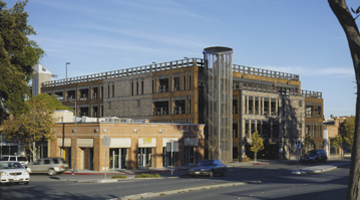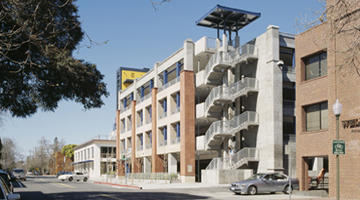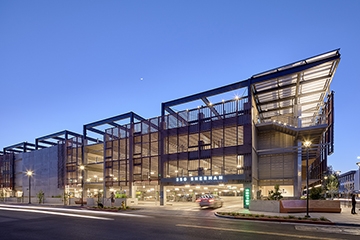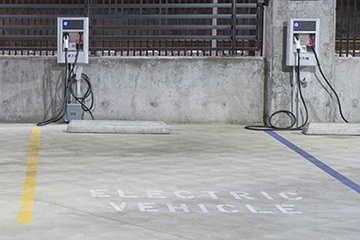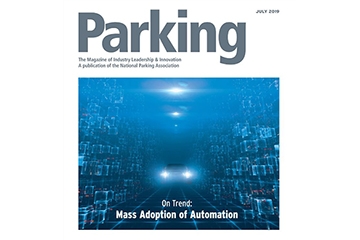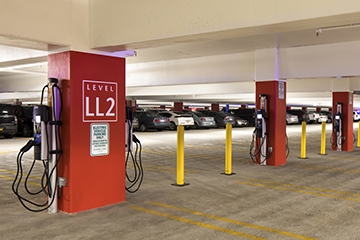Original Source: "The California City Embracing the Future of EVs" by Taylor Kim for Parking & Mobility Magazine
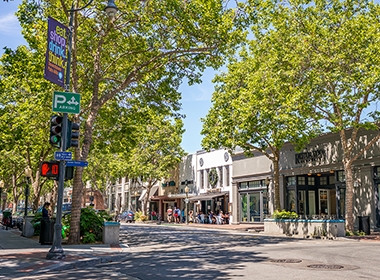
Home to electric vehicle pioneer Tesla, it is no surprise that the city of Palo Alto, leads the nation in electric vehicle sales at nearly 30% of new cars sold. As the city has embraced this technology and its role as an electric vehicle ambassador, it has enacted some of the most robust electric vehicle parking requirements in the country.
In 2014, Palo Alto established itself as a pioneer of EV legislation when it passed a first-of-its-kind law that required new homes, apartments, office buildings, and hotels to be wired for EV charging. To encourage adoption, the city has offered a variety of incentives such as free EV charging, a $30,000 rebate to offices and residential complexes that install chargers and a streamlined permit process for residential EV parking. The city’s current goal is to have 6,000 residential EVs by 2020, and 19,000 by 2030. This proactive legislation has proven remarkably successful; the city’s EV charging spaces are currently at around 40% occupancy.
Providing this much EV infrastructure comes at a high cost. According to the US Department of Energy, a single Level 2 charging station—Palo Alto’s standard— can cost up to $65,000 with an additional $12,700 for installation. EV charging points also lead to an increase in electricity demand; Palo Alto projects a 6-7% increase when EVs dominate the automobile market. However, when this infrastructure is included during initial construction verses a future retrofit, much of this cost can be mitigated.
Armed with this knowledge, when Palo Alto needed more public parking to support a new Public Safety building planned for downtown, they saw an opportunity to invest in the electrical future they wished to achieve. When the new California Avenue parking structure opens in 2020, 25% of the 630 parking spaces will be wired for EV charging, with 5%, or 32 spaces, accessible on its first day of operation. The remaining 125 spaces will have wiring in place so that charging stations can be installed in the future.
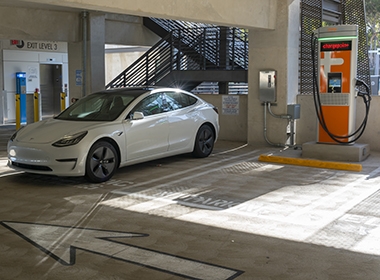
Such ambitious EV requirements pose unique design challenges to accommodate the increase in both electrical capacity and load. The transformer at the California Avenue Garage had to be upsized to be able to accommodate chargers for 125 future EV spaces. In order to lessen the overall power demand, 95% of the EV spaces in the facility will utilize power sharing dual chargers. When two cars are plugged into a dual charger, each will receive 50% power, instead of twice the power, which will decrease the electrical requirements by almost half of providing single chargers.
Providing sufficient EV accessibility requires careful consideration as well. The Americans with Disabilities Act (ADA) does not provide a national standard when it comes to EV, however the state of California has stringent requirements when it comes to EV accessibility. For the California Garage, this means the number of required EV accessible charging spaces is calculated based on the facility’s total number of charging stations rather than the total number of accessible spaces, which increases the number of accessible spaces required. Providing the additional spaces and clearances to accommodate this can in turn impact the overall stall count and efficiency.
As demand for EV charging continues to increase, efficient utilization of charging infrastructure will become more and more important. Cars that monopolize spaces long after they are done charging mean less charging for others who need it. For instance, when someone parks in an electric vehicle charging space on an office campus, they aren’t likely to move their car once it is done charging so someone else can use the space. That means a single space may only charge one car throughout the workday. Therefore, some Palo Alto office campus, such as Facebook, utilize EV valets who unplug a car once it is fully charged and move the cable to the next car.
Such adaptations are critical to the development of EV infrastructure and important to bear in mind when considering the projected future of EVs in the United States. While EV sales currently make up only 2% of the national market share, by 2025 that number is expected to increase to 7%, with around 1.1 million EVs sold. Other automakers are also hopping on the EV bandwagon. According to Bloomberg, the number of EV models on the market is predicted to double by 2022. Palo Alto’s accomplishments and dedication to promoting EVs and providing EV infrastructure can help us better understand how to prepare for an electrified future.


